Helen H. Moore's Blog, page 231
November 23, 2017
Between the garden and the gun
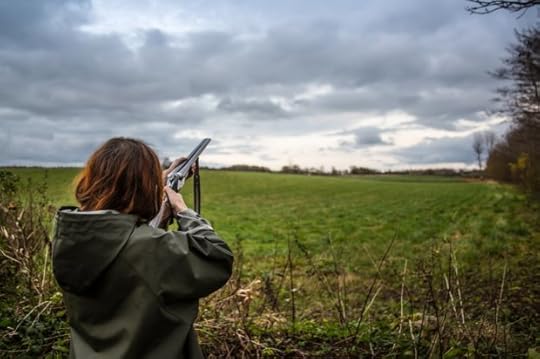
(Credit: Shutterstock)
Under the alarm-red glow of the Death Clock, I cradle a bone in my right hand and angle the flared joint end to my lips. When the shot of Russell’s Reserve bourbon rushes down the diaphysis and into my mouth, I catch it all, no spills. I am triumphant.
The bone shaft has been scraped of its marrow but fatty residue remains, adding a buttery layer to the bourbon’s vanilla, honey and oak. With a bone in my hand and the warmth spreading up to my cheeks, I feel a little like Daniel Boone around the campfire, even with this bit of modern technology in the background: “My Predicted Lifetime,” the LED-lit countdown that Austrian artist Werner Reiterer has programmed to predict how many seconds, minutes, hours and days are left in the life of the owner of the restaurant in which I have just shot my first “bourbon luge.”
We all take turns daring the Death Clock with bourbon and bone, while Jimmy Russell, the elder master distiller of Wild Turkey and Bourbon Hall-of-Famer, looks on with an indulgent grin. Aside from Russell and his son, Wild Turkey’s other master distiller Eddie Russell, I am the only local in our group, and I thought I had seen it all when it comes to how Kentuckians will serve bourbon. I’ve had Pappy Van Winkle in a Jell-O shot. Drinking from a scraped-out shank is a step beyond. It’s traveling into the primeval woods time, unraveling the ties of civilization time. Also, I stopped eating meat 12 years ago. So this is me, practicing being someone I’m not, which is to say someone at home in Kentucky, where I’ve lived for decades, uneasily and with one eye always on the road out of town. Tonight is just the warm-up, though. Tomorrow I’m going to shoot a gun.
* * *
“To take a tour of an American whiskey distillery is to be immersed in apocryphal horseshit,” San Francisco-based craft spirit authority Thad Vogler writes in his new book, “By the Smoke and the Smell: My Search for the Rare and the Sublime on the Spirits Trail.” Vogler’s prose is lovely and his passion is inspiring, and it crushes me that he’s not a fan of bourbon, which he brushes off as “sweet oak juice.”
Vogler is drawn to the agrarian roots of a drink and so the commodity-grain backbone of bourbon is of little interest to him. I get it. There’s precious little to love about a field of subsidized corn. There aren’t many things about Kentucky I am not conflicted about, but bourbon is one — in fact, I consider it a grave insult that we allow whiskey made outside of the Commonwealth to carry the bourbon name. For me, the appeal is in all of the details — the romance of the limestone water, the jealously guarded strains of yeast, the gleaming beauty of a copper Vendome still, the specific number of months each distillery demands its new white oak barrel staves be seasoned outside before the cooperage pounds them into barrels and sends them through the fire, and how that affects the specific taste of a level-4 charred white oak as the liquor seeps in and out of the wood, gradually over the course of years — years! — taking on the flavors of caramel and toffee and vanilla and all that what-not in an aging process that has no viable shortcuts. You won’t convince me that transforming something basic into a rich and complex delight isn’t just a little bit magical. You don’t need to go find a rare guitar to write a kick-ass song.
For many bourbon drinkers, the “apocryphal horseshit” served alongside the drink is part of the appeal. Maybe it’s part of accepting that history is a malleable and exploitable thing. Bourbon is one thing most Kentuckians, even those in the dry counties, can agree on. We make this, and it is good. Once, in his second term, Barack Obama even threatened to sit down and drink bourbon with his sworn enemy, Kentucky Senator Mitch McConnell. Of course, the stories are also used to move product in a crowded and ever-demanding market. A jaded drinker might think the industry reached a low point of storybook pandering when a bourbon that brags of being “finished at sea” hit the shelves, but I suspect we’re not far away from the unveiling of, let’s call it Old Man River, a bourbon aged on open-air flatboats drifting up and down the Ohio along Evan Williams himself’s trading route and retailing for $200 a bottle, if you’re lucky enough to find one.
So I’m going shooting with a group from Wild Turkey before we visit the distillery because the bourbon’s legend goes a little something like this: Once upon a time in Kentucky, a worker at Anderson County Distillery, as it was known then, thought he could make an even better bourbon than the celebrated distillery already did. He tinkered with his own high-rye recipe in secret, “under the Kentucky moonlight,” until in 1940, he hit on aged-eight-years perfection. He wrangled himself and his secret stash onto a turkey hunt party attended by his bosses and other bigwigs, and they all took one sip of what we now know as Wild Turkey and fell in love and that’s the “rare breed” story, more or less. The name of that enterprising distillery worker, alas, “has been lost to us.” Well, nobody wants to go drinking with a fact checker.
What bourbon knows is that the right story can give a thing extra value — every “Antiques Roadshow” viewer knows this. Vogler isn’t wrong about our proclivity for loose truth — it is as much a staple of the industry, and the region, as limestone water — but he does undervalue its potential power. You say apocrypha, even horseshit; I say myth.
* * *
A Kentucky legend has it that W. Axl Rose, born hours away up windblown I-65 in Lafayette, Indiana, wrote the Guns N’ Roses party anthem “Paradise City” as an ode to Louisville. All textual evidence points against this being true, and in the direction instead of maybe, say, Los Angeles, that city of gorgeous weather and women where Rose sought his fame and found his fortune. But it doesn’t surprise me that a close reader would conclude the line “where the grass is green and the girls are pretty” could only be describing the kick-drum thumping a heart naturally feels upon crossing the Ohio from Indiana and taking that first breath of Kentucky’s wild, spore-ridden river valley air.
The grass here isn’t actually blue, so who’s to say?
Guns N’ Roses closed their recent Louisville concert with “Paradise City” but did not address any rumored local ties. Security lines were long to get into the KFC Yum! Center, and a sign posted on the arena’s doors stated the artists had stipulated this to be a firearm-free event. During “Live and Let Die,” gunshot sound effects rang out during the chorus, accompanied by video of shooting guns, as if there exists still an unbreachable line between fantasy and reality when it comes to guns in America, as if we are all very sure of where that line is and that we would never cross it.
This one time at a Rolling Stones concert in Bogotá, I discovered a beat too late that the bit in “Dead Flowers” about “making bets on Kentucky Derby Day” is not a universal shout-along line. Oh, this is something only we do, I realized when I got the side-eye from the guy next to me. Every place thinks it’s the center of the universe. Oh won’t you please take me home?
* * *
There’s harmless horseshit, like Louisville being the “Paradise City,” like the sepia gloss put on Kentucky’s bourbon stories to make you feel more like the person you want to be when you drink it, and there are myths that manage to overshadow, even alter, reality. Like that thing you always heard about the word “Kentucky” meaning “dark and bloody ground”? Turns out that’s some horseshit, too.
In his elegiac new book, “On Homesickness: A Plea (In Place),” Kentucky-born writer Jesse Donaldson grapples with the push and pull of his native land, a contradictory and complicated “Kentucky of the mind,” as he puts it, while he prepares himself for fatherhood. Donaldson opens his book with the settlers in Jefferson County, where I live. “Rumor spread that the Indian word from which their new home took its name meant “dark and bloody ground” but it did not.”
According to research by archeologist A. Gwynn Henderson, the myth of “dark and bloody ground” allowed white settlers to take control of the land that became Kentucky guilt-free, ostensibly because it was contested territory among Native American tribes and therefore belonged to no one.
Here was a paradise of a kind, ripe for the taking:
Yet even before Kentucky became a state in 1792, this idea had taken on an all-encompassing meaning: All of Kentucky was never the permanent home for any indigenous groups. It had been merely a “happy hunting ground” or the scene of prehistoric battles.
Not only was the myth convenient in the seizing of land, it baked into the state’s origin story a certain romanticized capacity for violence. And yet:
There is no single etymology for the name “Kentucky” (Kentucke, Cantucky). One of the first recorded uses of the name is in a deposition describing the capture of a group of colonial traders by Indians allied to the French on Jan. 26, 1753, at a place they called “Kentucky.” They described the location of this “Kentucky” as being south of the Allegheny River about 150 miles from the lower Shawnee Town, which sat at the confluence of the Scioto and Ohio rivers.
Various authors offer a number of other opinions concerning the word’s origin: an Iroquois word (Kentake) meaning “meadow land”; a Wyandot word (Ken-tah-the) meaning “the land of tomorrow”; an Algonquian term (kin-athiki) referring to a river bottom; a Shawnee word meaning “head of a river.”
“What we can conjure is often preferable to what we can hold,” Donaldson writes. “The truth of a place can sting.” To say nothing of the excavation it can take to uncover the truth of a place to begin with.
* * *
I grew up in a gun-owning family, but I’ve never fired one before this day, so I’m steered toward the shooting range version of the bunny slope for my remedial shooting instruction. It’s a gorgeous fall day, the sun sharp and the sky blue, and the leaves have started to turn orange. It’s the kind of day I hope can help me find some faith in the meadow land. We’re on a farm that has a name, Seldom Scene, and there’s an English Lab called Belle lolling nearby and a gourmet picnic spread under a white tent and by god, life is beautiful. In tone, this event is about as far from the Knob Creek Machine Gun Shoot, a local twice-annual shoot ’em up that is exactly what it claims to be, as a gun party could be. This feels civilized, safe even. I feel like a fraud, but a genteel fraud.
I don’t know when my parents bought their first gun, but I remember when it felt like everyone I knew back home in our small town got serious about them. In January of 1994, soon after the whole state had been grounded by an epic blizzard, a group of local teens shot another boy as he left his job at the Golden Corral, where my family had eaten so many affordable buffet dinners, and stole his car. Later they stole another car, and shot another boy, who survived. The first boy did not. The crimes echoed scenes in the movie “Menace II Society,” which the boys who were later arrested said they had watched many times. The pop culture tie-in made the national news, turning a small town’s tragedy into an MTV News spectacle. Suddenly, it appeared, to me at least, that people were talking about guns a lot. Our town had not been a dangerous town but maybe now it was, seemed to be the sentiment. The boys who were shot were white. The boys who did the shooting were black. It is impossible to tell a story like this in America without that detail. That detail shapes the way way a story is allowed, even encouraged, to grow bigger than its facts, to become myth.
Later that year I went away to college, and my mother asked me, as we were rounding up all the stuff a freshman needs for dorm living, if I needed a gun of my own. We lived in a boring neighborhood on the edge of the county but mom had honed her survival instincts and skills on Manhattan’s Lower East Side in the ’70s. She was serious. “You’ll be in the city,” she said of my Catholic social justice-teaching liberal arts college located in an expensive, well-established residential neighborhood. I was flabbergasted. “That sounds unnecessary and also dangerous,” I scoffed.
When Mom would visit, I would remind her that she couldn’t bring her own gun, which she packed with her on the drive up on the rural highway between home and school, into my dorm. Not my rules. At rehearsals for our student production of “Steel Magnolias,” I took to playing with the theater department’s fake handgun, heavy as the real thing and used as a comic prop in the play, turning its glossy weight over and over, back and forth between my hands.
* * *
I’m good at following directions, so I can lean my weight forward to minimize the recoil and nestle the butt of the shotgun into the soft hollow between my shoulder and collarbone to stabilize it. I have no natural aim, though, and our guide loses patience with me very fast. I am unfazed. I get a couple of lucky shots off and I can’t believe how excited I am, proud of myself, even, to hit the clay pigeon and see it shatter in midair. It feels like the first time I parallel parked.
The feeling fades fast. Shots continue to pierce the rural silence for the next half-hour as everyone takes a turn. After the adrenaline clears, I realize I had been afraid that this would flip a switch inside of me, that I might like the way the barrel became an extension of my hand, and want to do it again. That’s why I’m here, isn’t it? To feel the connection between this old-fashioned heritage sport, this gentleman’s pursuit, and the indiscriminate high-gloss semi-automatics on sale at every Walmart, to understand how one myth of what is intrinsic to a place wins over another. But I can’t imagine doing it again, much less pointing a gun at a bird, a buck, a paper target shaped like a person, with a head and a heart and areas of the body that are worth more points than others.
There is no comparison between shooting at a clay pigeon and a human being. I know that. But I can’t help but remember this:
A year before the massacre at Columbine High School, a freshman opened fire on a group of his schoolmates who met before classes to pray together at the high school across town from my house, killing three and injuring five. This atrocity devastated the community. School had not been a dangerous place but maybe now it was. Kids were made to carry see-through backpacks.
He stole the guns he used from his neighbor and from his own parents. Why didn’t they lock up their guns? My parents and other responsible gun owners asked, the idea being that a gun isn’t dangerous until it’s in a dangerous hand. Our floorboards groaned from the weight of the gun safe until we had to jack it up from underneath. If there was much of a community discussion over the guns themselves, the plain ubiquity of them, I missed it. They were, are, simply a fact, all around us like starlings in trees, like ragweed.
In the 20 years since the Heath High School shooting, the U.S. has suffered through so many similar slaughters that it now takes a truly staggering number of fatalities to make local tragedy into national news, to shock the country into paying attention. Now schools practice lockdown drills that they hope will save children’s lives. The myth that has won in Kentucky, where the last Democratic gubernatorial candidate received an “A” rating from the NRA, is the one about the Good Guy with a Gun who will save us from the Armed Madman, the myth that we’ll always know which hands are dangerous, and that our gamble on good guys will pay off.
What nobody tells you about shooting a shotgun is how after, all day, it feels like you’ve been punched.
* * *
All of the meat on this trip, which I’m not used to, makes me a little sick but the bourbon soothes my stomach — some granny tales are true. I have no desire to shoot ever again, but I would like a pair of tall leather boots and one of those vests with all the pockets. I remain upside-down in my feelings about my home from Donaldson, who writes, “I am trapped somewhere on a bridge between the Kentucky of my mind (an idealized past) and the Kentucky I no longer know (some troubled present).”
But a glass of Wild Turkey, neat, and a fire and telling stories about this time and that, that is a Kentucky I can know and love. One of our party asks Eddie Russell how his father Jimmy, who has worked here since 1954 and worked his way up to master distiller and industry icon, ended up in the bourbon business to begin with. Eddie swirls his drink. “Do you want Jimmy’s story, or do you want the truth?” Can one even exist without the other? Eddie has worked with Kentucky bourbon his whole life, so I think he knows this. He gives us both.
Thanks, no thanks. Ten films (though some are turkeys) to be grateful for this Thanksgiving
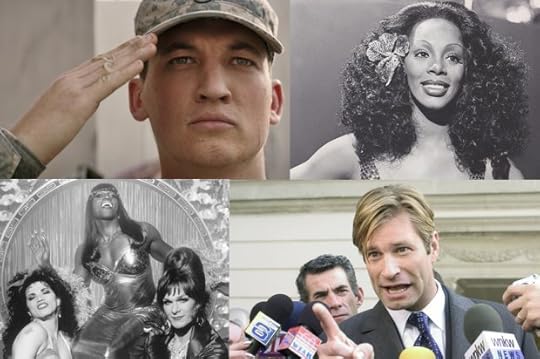
Thank You For Your Service; Thank God It's Friday; To Wong Foo, Thanks for Everything! Julie Newmar; Thank You for Smoking (Credit: Universal Pictures/Columbia Pictures/Fox Searchlight Pictures)
Thanksgiving is a time to be grateful. It’s a time when families come together to appreciate what they have. It’s also a time to overindulge by overeating and overspending (on holiday shopping).
In cinema, there are many films where gratitude is on (or off) the menu. Here are ten films (in alphabetical order) with “Thank(s)” in their title. They are a mixed bag of ambitious — and not always successful — tales of drama, romance, murder and mayhem. There are stories, both fictional and real, about etiquette, understanding, tolerance and support.
So file these ten films under “Thanks” or “No Thanks.” They may be worth a look with the family — or for anyone who needs to escape the famdamily this holiday season.
1. “Happythankyoumoreplease” Josh Radnor of “How I Met Your Mother” fame wrote, directed and stars in this twee-dious indie about six quirky characters in New York City. Young and impetuous, they make questionable decisions about relationships because they just don’t have their shit together yet. Mary Catherine (Zoe Kazan) and her boyfriend Charlie (Pablo Schreiber) are debating about leaving NY for LA when he gets a job opportunity. Annie (Malin Ackerman) who has alopecia — she creates a drinking game about this — is reluctant to date the nice guy (Tony Hale) at her job, who adores her. And Sam (Radnor), a short story writer, takes in a young African-American boy, Rasheen (Michael Algieri), who is left behind on the subway. His half-hearted attempts to return Rasheen to the authorities are troubling, but so is Sam’s creepy attempt to woo a singer/waitress named Mississippi (Kate Mara) by having her move in with him for three days. “Happythankyoumoreplease” wants its fragile-feeling characters to realize their potential, and be grateful for what they have — or deserve — but Radnor’s script contains more eye-rolling moments than insights.
2. “Mr. Thank You” The titular character, a bus driver named Arigatô-san (Ken Uehara), is unfailingly polite, thanking everyone who allows his bus to pass. “That’s why people call him ‘Mr. Thank You,’” a subtitle reads. Hiroshi Shimizu’s 75-minute road movie from 1936 could get viewers blind drunk by the midpoint if they sipped sake every time a character says “Thank You.” The story has a mother and her 17-year-old daughter going to Tokyo “to visit relatives,” they say, though the truth is a bit more shameful. They travel with a handful of other nameless passengers, whose stories unfold over the course of the film. Everyone has good manners, although one gentleman is irked by Arigatô-san’s stopping to pass messages on to villagers or do some shopping. The film has a jaunty score and some fabulous scenery, plus the effect of the bus passing people is nifty.
3. “Thank God It’s Friday” No, this is not a film about storeowners the day after Thanksgiving. It’s a lame disco-era comedy featuring more than a dozen characters at a nightclub called the Zoo, owned by Tony (Jeff Goldblum). Frannie (Valerie Landsburg) is a teenager who wants to win a dance contest with music by “special guest stars” The Commodores; a married couple (Mark Lonow and Andrea Howard) has a night of excitement; Jennifer (Debra Winger) is a klutzy single looking for love; and Nicole (Donna Summer) is hoping for a chance to sing. As DJ Bobby Speed (Ray Vitte) keeps the wall-to-wall music playing, the performers mug their way through the bad jokes and slap-stick physical humor. “Thank God, It’s Friday” is not “the best thing for dancing since feet.” But Thank God, Marv Gomez (Chick Vennera), in full leather no less, performs an athletic dance routine atop cars in the club’s parking lot, and Donna Summer croons the catchy Oscar-winning song, “Last Dance.”
4. “Thanks For Sharing” This clumsy, message-laden drama about a trio of sex addicts may portray the important topic of recovery, but, like “Thank God, It’s Friday,” it plays out like a very special episode of “The Love Boat.” This wholly mediocre film, co-written and directed by Stuart Blumberg (who co-scripted “The Kids Are All Right”), introduces its protagonists — Adam (Mark Ruffalo), Neil (Josh Gad) and Mike (Tim Robbins) — at a Sex Addicts Anonymous meeting and alternates telling their stories, even though they are all basically the same. It’s 12-step and repeat. Each character faces obstacles, hits bottom and seeks redemption/forgiveness. “Thanks for Sharing” offers nothing new in terms of its plotting — the film is entirely too formulaic and obvious — so there is little for audiences to enjoy. The comedy is awkward and the sex is mostly depressing. Although Alecia Moore (aka Pink) is a standout as Neil’s girlfriend, Dede, “Thanks for Sharing” wastes its strong cast by having them try very hard with very little.
5. “Thank You for Playing” In this moving documentary, video game designer Ryan Green creates “That Dragon, Cancer,” as a way of creating a game/safe place to talk about (and remember) his young son, Joel, who has a fatal brain tumor. The film uses avatars, home movies, observational scenes and interviews to convey the family’s experiences. “Thank You for Playing” is best at showing how Ryan’s game uses emotion to engage the player. In doing so, he considers what you can experience in a video game while also addressing fears about dying and beliefs in heaven. Some folks may find Green’s game inappropriate or self-serving, but it’s impossible not to get choked up seeing players crying after testing “That Dragon, Cancer” at a video game trade show.
6. “Thank You for Smoking” An achingly funny comedy about Nick Naylor (Aaron Eckhart, perfectly cast) as an amoral tobacco lobbyist, this adaptation of Christopher Buckley’s novel features an outlandish cast of characters, all hilariously played by outstanding character actors (Robert Duvall, Rob Lowe, Sam Elliott, Maria Bello, and William H. Macy). As Nick teaches his son (Cameron Bright) ethics and how to argue persuasively — even if you’re wrong — he encounters a host of bad situations, including bribing an ex-corporate spokesman now dying of lung cancer, sleeping with a reporter (Katie Holmes) penning an expose and being kidnapped by an anti-smoking concern. Written and directed by Jason Reitman, “Thank You for Smoking” is a shrewd mix of satire, sight gags and one-liners that rarely miss the mark — or a beat.
7. “Thank You for Your Service” Inspired by a true story (and adapted from David Finkel’s book), this compelling tale of soldiers’ trauma and survivor’s guilt has Adam (Miles Teller), Solo (Beulah Koale), and Billy (Joe Cole) re-adjusting to life back in the States. The men observe about war, “While you’re there, you want to get home. When you get home, it’s all fucked.” Each man has had his brain “scrambled” by the horrors of war. And while Solo acknowledges, “the Army saved my life,” the VA isn’t very helpful when he really needs assistance. Likewise, Adam, a Sergeant who commanded a dozen men, is reeling from the horrors of war; he still tastes the blood of a man he tried to save. When a senior officer tells Adam that getting help is “bad for Big Army” because it shows weakness in leadership, it’s quietly devastating. The ironically titled “Thank You For Your Service” has some on-the-nose symbolism and didacticism, but its points about how soldiers fare when they get out of active duty are valid and need to be addressed.
8. “Thank You, Jeeves!” This 1936 adaptation of the P.G. Wodehouse story has Bertie Wooster (David Niven) in need of new adventure. “Remembering past adventures, I fail to share your enthusiasm,” his unflappable manservant Jeeves (Arthur Treacher) deadpans. But adventure indeed arrives at Bertie’s abode in the form of Marjorie Lowman (Virginia Field), a woman on the run. When Marjorie flees in the middle of the night, Bertie and Jeeves follow in hot pursuit the next morning. This hour-long film has plenty of wordplay and slapstick — much of the latter provided by Drowsy (Willie Best), an African-American saxophonist who the men meet on the road. As the plots and characters all converge in the madcap ending, Jeeves proves, once again, that he knows best. And Bertie is grateful, as always.
9. “Thank You, Mr. Moto” Peter Lorre reprises his role as the Japanese detective in this, the second entry in the quaint film series loosely based on John P. Marquand’s novels. As one character announces, “When Mr. Moto shows up, something happens.” And indeed it does. Colonel Tchernov (Sig Rumann) conspires to obtain a series of antique scrolls owned by Prince Chung (Philip Ahn). However, the Colonel ends up dead. Someone wants the scrolls — they indicate the location of Genghis Khan’s tomb where treasure awaits — and will stop at nothing to get them. Thankfully, the clever Mr. Moto sets a series of traps to catch the criminals. Lorre is, unfortunately, in yellowface as Mr. Moto, but he does provide some verve as a series of reversals of fortune occur. Alas, the casting of American actors in Chinese roles is equally problematic and dubious.
10. “To Wong Foo, Thanks for Everything, Julie Newmar” A signed photograph of Julie Newmar that reads, “To Wong Foo, thanks for everything,” inspires New York City Drag Queens of the Year, Vida (Patrick Swayze) and Noxzema (Wesley Snipes) to cash in plane tickets to drive across country while dispensing lessons to Chi Chi (John Leguizamo), a drag “princess.” However, when their car breaks down outside Snydersville, the three larger than life outsiders must teach the whole town lessons of empowerment, acceptance and tolerance. This fitfully amusing comedy-drama benefits from the sassy performances by the three male stars who are convincing in a series of fabulous outfits. However, they are given an obvious script (by Douglas Carter Beane) that is better with the one-liners than it is with its plotlines involving spousal abuse and a racist, homophobic sheriff (Chris Penn). The fine supporting cast includes Stockard Channing, Blythe Danner, Beth Grant and Arliss Howard, are given largely thankless roles.
Turkey may bring more trust to your Thanksgiving table
‘Tis the season for giblets, wattles and snoods – oh my. On Thanksgiving and Christmas, Americans consume about 68 million turkeys – one for about every five of us. In fact, 29 percent of all turkeys gobbled down in the U.S. are consumed during the holidays.
And where turkey is being eaten, there is inevitably talk of tryptophan – a naturally occurring chemical found in turkey and other foods. This building block of protein often takes the blame for eaters feeling sleepy soon after the Thanksgiving meal.
Science has cleared tryptophan, though – it’s not the culprit when it comes to drowsiness after the feast. There are far more important factors leading to those post-turkey comas, not least of which is my Uncle Clarence’s story about parking at the airport. Add that to free-flowing booze combined with a load of carbohydrates followed by plenty more booze and you have a foolproof recipe for dozing off on the couch. Turkey, chicken, lamb and beef all contain roughly the same amount of tryptophan – ranging from 0.13-0.39 grams per 100 grams of food – yet the sleepiness myth has never surrounded those other foods.

Overeating and drinking are more likely at the root of your post-feast nap.
Brent Hofacker/Shutterstock.com
So tryptophan is off the snooze-inducing hook. But researchers in the Netherlands suggest it does have a different psychological effect: They’ve discovered that doses of tryptophan (chemically known as L-tryptophan and abbreviated TRP) can promote interpersonal trust – that feeling you get when you look somebody in the eye, shake her hand and think, “I can cooperate with this person and she would reciprocate.”
In a study published in the journal Psychological Science, pairs of volunteers were each given an oral dose of 0.8g of TRP or a placebo. For comparison, a 100g standard serving of turkey about the thickness of a deck of playing cards contains about 0.31g of tryptophan.
Each duo then sat in separate cubicles and played a game where one person (the truster) was given US$7 and had to decide how much to transfer to the other person. The transferred money was then multiplied by three and the trustee could give back part of the tripled money.
The more money you’re willing to give away in the first place, the greater your return in the end – but you have to trust the other person to cooperate. A very simple and profitable game if played right.
The researchers found that the TRP group gave $4.81 on average and the placebo group offered only $3.38. This is a sizable 42 percent increase in transferred money between the two groups.
So what’s going on? Here’s the brain science behind how the tryptophan-trust connection works.
TRP is an essential amino acid found in many foods including eggs, soybeans, chocolate, cheeses, fish, nuts and, of course, turkey. The brain region associated with interpersonal trust – known as the medial prefrontal cortex – is powered by the neurotransmitter serotonin. Neurotransmitters are chemical messengers found throughout the body that transmit signals from one nerve cell to another.
Our bodies synthesize many neurotransmitters from simple amino acids which are readily available in our food and can be quickly converted in a small number of biosynthetic steps. The neurotransmitter serotonin is controlled in part by the release of TRP. This means that as you increase levels of TRP you’re able to release serotonin in the brain region specially designed to process trust. Think of a flashing neon sign that reads “trust this person, trust this person.”

A plate of turkey won’t convince you to buy into Cousin Gerald’s pyramid scheme.
Rawpixel.com/Shutterstock.com
Keep in mind, however, that our decisions to trust or not to trust do not rely solely on ingesting TRP. In the real world we take into account personality factors, how well we know someone, previous cooperation with that person, tone of voice, eye contact, body language and so on. These all have a hand in shaping the conscious and unconscious rules that govern our pro-social behavior and trust preferences.
 So this holiday season, eat your turkey (or salmon or cashews or cottage cheese or chocolate) and remember that few things are more pleasurable than the joy that comes from sharing a holiday meal with loved ones. Science shows us that tryptophan can promote social bonding, but there still is no substitute for giving thanks. Trust me.
So this holiday season, eat your turkey (or salmon or cashews or cottage cheese or chocolate) and remember that few things are more pleasurable than the joy that comes from sharing a holiday meal with loved ones. Science shows us that tryptophan can promote social bonding, but there still is no substitute for giving thanks. Trust me.
Kevin Bennett, Assistant Teaching Professor of Psychology, Pennsylvania State University
10 Bluetooth Speakers & Headphones You Can Already Get For Black Friday Pricing

All music lovers rejoice: we’ve collected ten incredible speakers and headphones you won’t need to break the bank on, and won’t need to wait in massive Black Friday lines for. Best of all, you can still enjoy the same unreal Black Friday discounts — so go ahead, turn the volume up, let the music play and drown out the sound of all your relatives asking you deeply embarrassing questions in front of your friends.
Plus, use the code BFRIDAY20 for an extra 20% off the sale prices listed!

Bringing a revamped model to the best-selling Pro model, these FRESHeBUDS Ultra Earbuds boast better drivers, speaker cones, microphone, a stronger magnet and longer battery life. Best of all, they’re still water and sweat resistant and automatically pair with your phone when pulled apart.
Buy now: Get these high-quality buds for $49.99, or 66% off the usual price of $149.99.
2. HomeSpot Rugged Waterproof Bluetooth Speaker
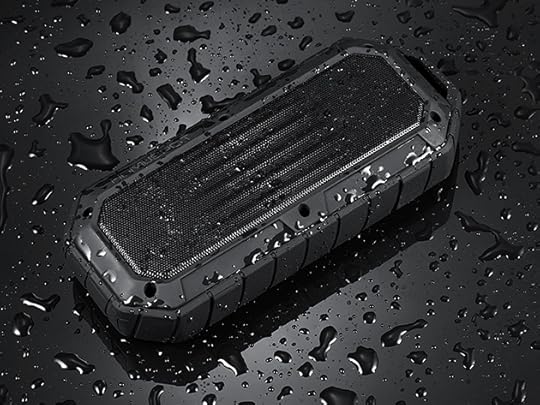
If you’re looking for a Bluetooth speaker that can keep up with all your adventures, this HomeSpot Rugged Waterproof Bluetooth Speaker deflects dust, dirt, and water and is coated with a rubberized surface. That means its impact-resistant enough that you can take your tunes with you without worry (and it’s shockproof too).
Buy now: Get this rugged speaker for $29.99, or 62% off the usual price of $79.99.
3. HBQ i7 Twins True Wireless Earphones

These lightweight HBQ i7 Twins True Wireless Earphones aren’t just extremely comfortable — they use Bluetooth 4.2 to deliver high-quality, lag-free connections. Plus the high-performance battery lasts for four to five hours of playtime, meaning you’ll want to leave them in all day long.
Buy now: These hands-free buds are $29.99, or 40% off the usual price of $49.99.
4. Avantree AptX Low Latency Bluetooth Headphones

You don’t always need to be blasting music through your headphones: these Avantree AptX Low Latency Bluetooth Headphones are perfect for everything from watching movies to taking calls. The crisp treble, deep bass and superb clarity combined with lag-free superior aptX audio technology mean you get a perfect listening experience, every time.
Buy now: Get these high-quality headphones for $69.99, reduced from $99.99.
5. 1Voice Bluetooth 100% Wirefree Earbuds
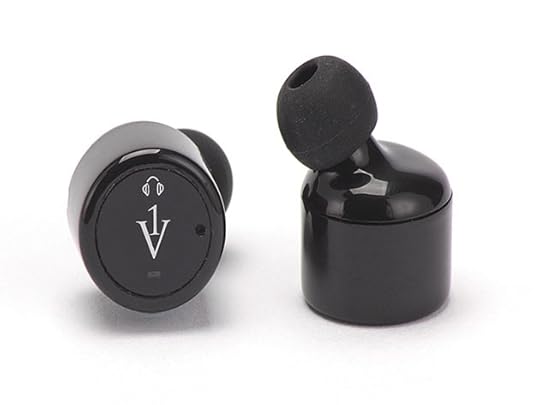
Move around freely with these 1Voice Bluetooth 100% Wirefree Earbuds — they’re free of any cord, so you can move around unfettered, whether you’re working out or just trying to find those papers in the office on your weekly conference call. They fit snugly in your ear without falling out, plus you can play them for four hours without stopping.
Buy now: Get these wire-free buds for $32, or 73% off the usual price of $119.
6. ALL-Terrain Bone Conduction Bluetooth Headphones
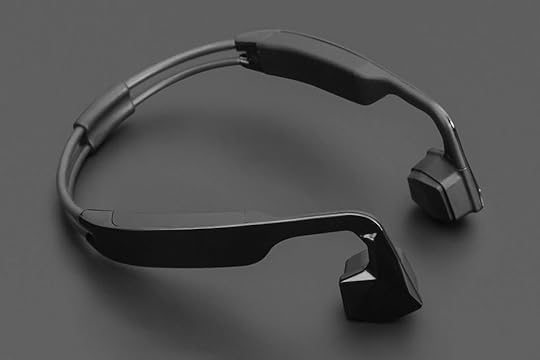
Want to go a step above wireless? Check out these ALL-Terrain Bone Conduction Bluetooth Headphones: they’re a set of rugged, water-resistant headphones that utilize innovative bone conduction technology to bypass your eardrum, feeding sound directly into your inner ear through vibration. They sit in front of your ears, so you stay tuned into the world around you — while still enjoying your favorite tunes.
Buy now: Get these innovative earphones for $60, or 59% off the usual price of $149.95.

Sometimes bigger really is better: this XXL Shower Speaker has an upgraded audio chipset that pumps out 3 watts of sound while making and receiving crystal clear calls — plus it’s twice the size and power of the standard shower speaker. It even includes a newly enlarged battery that only needs to be charged once a month.
Buy now: Get this XL speaker for $19.99, reduced from the original price of $39.99, or 80% off the usual price of $99.99.
8. DASH A: World’s Flattest Portable Speaker

Think of the DASH A: World’s Flattest Portable Speaker with an incredibly slim, ultra powerful sound bar – it delivers ten hours of flawless playback on each charge and emits every subtle auditory detail. Take it with you anywhere, whether you want to watch a picnic outdoors or host a shindig inside.
Buy now: Get this sleek speaker for $59.99, or 69% off the usual price of $199.
9. TREBLAB XR500 Wireless Sports Earbuds

Kick your workouts (even the winter ones) into high gear with these TREBLAB XR500 Wireless Sports Earbuds. They fit securely in your ears, deliver nine hours of sound, and help you get into the zone without distractions thanks to passive noise cancellation and true HD sound.
Buy now: Get these sports-ready buds for $36.99, or 79% off the usual price of $179.99.
10. All-Terrain Sound: The World’s Most Experienced Speaker

You can do anything with this All-Terrain Sound: The World’s Most Experienced Speaker – clip it to your bike as you hit the road or slip it in your bag as you hit the slopes, and you get 14 hours of incredible playback time. You can even drop it more than ten feet onto concrete and it’ll survive (really).
Buy now: Get this durable, portable speaker for $29.99, or 49% off the usual price of $59.95.
Don’t forget: use the code BFRIDAY20 for an extra 20% off the sale prices listed!
10 Black Friday deals you won’t want to miss out on
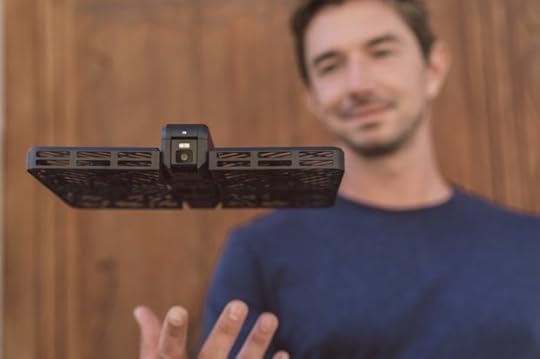
Forget lining up in the cold after stuffing yourself on turkey — stay cozy and warm and get your clicking finger prepped for these amazing Black Friday deals. From technology-forward gadgets to pragmatic charging cables, stylish smartwatches to plasma-beam powered lighters, we’ve got everything you need to be the best gift-giver this holiday season (even if you’re just filling up your own stocking).
1. Hover 4K Camera Passport Self-Flying Camera Drone

This Red Dot Design award-winning drone captures all your epic adventures and takes incredible photos — without you needing to maneuver it yourself. Thanks to facial recognition technology, you can effortlessly take 360º panoramic video of your next vacation, and even snap photos with your hand with automation technology.
Buy now: Get this innovative drone for $349.99, reduced from $499.99.
2. Glowing iOS Lightning Charging Cable
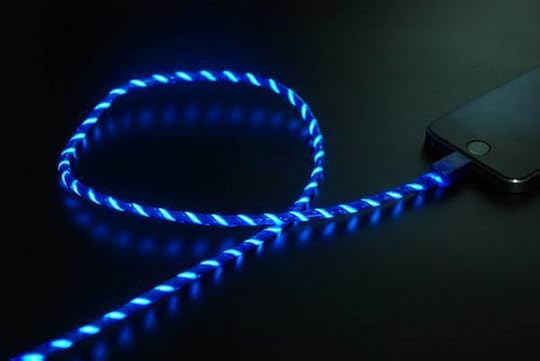
This practical and funky iOS charging cable is as fun as it is convenient. You can scope out your charging speed by observing the speed of the light flow: the higher the current, the faster the charge.
Buy now: Get this glowing cable for $9.99, or 50% off the usual price of $20.
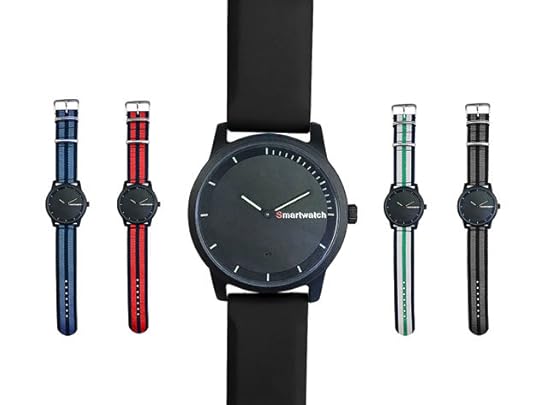
Sometimes smartwatches end up looking too much like what they do — but these hybrid smartwatchesfeature both elegant, classic timepiece design with smart technology. It’s the best of two worlds: you get fitness monitoring, notifications and the ability to take hands-free photos — all while effortlessly going from the gym to the boardroom.
Buy now: Get these slick smartwatches for $49, or half off the usual price of $99. Save an extra 20% off the sale price with coupon code: BFRIDAY20.
4. ROAV Eyewear: The World’s Thinnest Folding Sunglasses

You know those moments where you wish you had sunglasses, but never took the time to pack them away? These foldable, stylish sunnies offer maximum UV protection without cramping your fashion sense — that means you’ll always have a pair, right when you need them.
Buy now: Get these amazing-looking sunnies for $89.99, reduced from the original price of $145. Save an extra 20% off the sale price with coupon code: BFRIDAY20.
5. VEIU Mini Smart Video Doorbell

You don’t need an intense home security system to get a better hold over your safety: just use this smart video doorbell to keep an eye (literally) on who’s at your door. With the app, you can talk to who’s there, record the interaction and more — you get 100% visibility whether it’s night or day with infrared night vision, and stream video to your device using your home Wi-Fi.
Buy now: Upgrade your security for $149.99, reduced from $249. Save an extra 20% off the sale price with coupon code: BFRIDAY20.
6. SwissTek Double Layer Smart Umbrella: 2-Pack
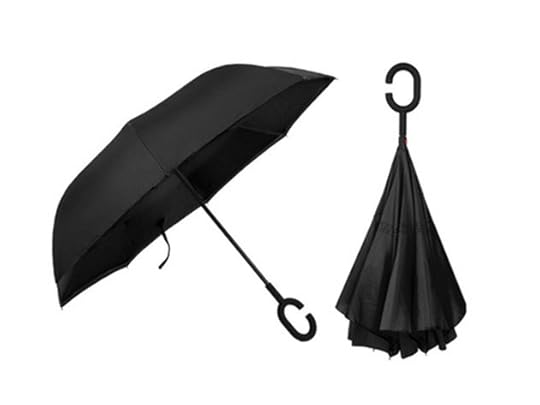
The weather’s getting chilly, meaning you’ll need the proper gear to keep you dry and comfortable when winter hits. These drip-free umbrellas feature an innovative reverse-folding design, opening from the top rather than the bottom. That means they’re windproof, drain effectively and thanks to UV fabrication, keep out harmful rays and rain alike.
Buy now: Get these innovative umbrellas for $33, or 76% off the usual price of $140. Save an extra 20% off the sale price with coupon code: BFRIDAY20.
7. SaberLight Rechargeable Flameless Plasma Beam Lighter: 2-Pack
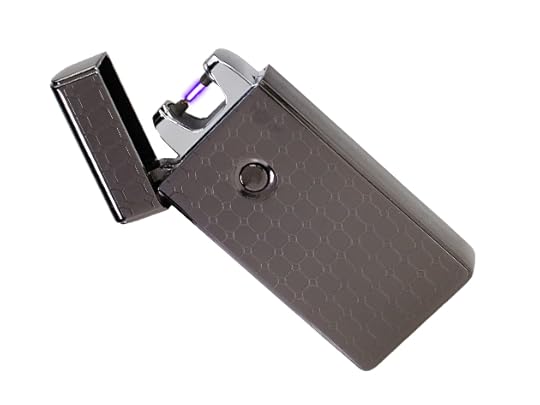
Stop wasting your funds on those terrible butane-powered lighters: plasma is the wave of the future, and these rechargeable, weather-proof lighters produce a flame that’s way hotter and more effective. They’re TSA-approved, nontoxic and completely rechargeable — and you can get up to 300 charges off a single charge.
Buy now: Get this electricity-generated lighter for $29.99, or 85% off the usual price of $199.98. Save an extra 20% off the sale price with coupon code: BFRIDAY20.
8. Hyperchiller Coffee Chiller: 2-Pack
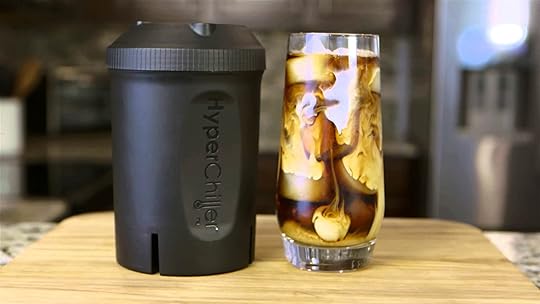
Make perfect iced coffee without waiting forever for cold brew to steep, and without watering down a hot cuppa joe with ice. This innovative coffee chiller separates ice from coffee, so you can cool your coffee down without diluting it.
Buy now: Get this convenient chiller for $45 — that’s reduced from the original price of $60. Save an extra 20% off the sale price with coupon code: BFRIDAY20.
9. Genius Pack Aerial Hardside Carry On Spinner
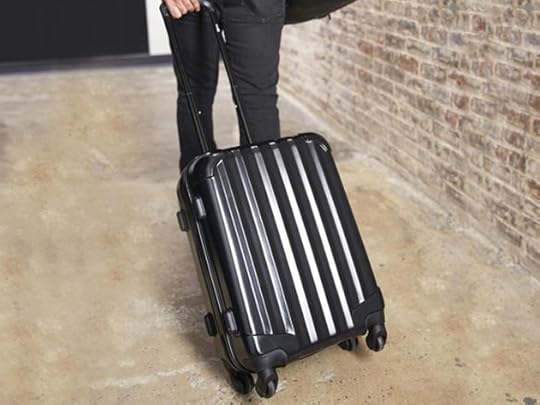
Make packing for holiday travel manageable with this maximum-sized carry-on rolling suitcase. The minimalist design keeps you organized from neatly designed interior compartments and an integrated packing checklist, while the 360º spinner wheels help you go through the terminal with ease.
Buy now: Get this convenient bag for $159.99, reduced from $248.
10. Emergency Multi-Function Radio & Flashlight

Be prepared for anything with this solar-powered/hand-crank operable multi-function radio. You can tune it to play AM, FM and WB radio, and even charge up USB devices with the onboard battery — it also includes a flashlight, just in case.
Buy now: Get this emergency-kit necessity for $18.99, or 78% off the usual price of $89.95. Save an extra 20% off the sale price with coupon code: BFRIDAY20.
November 22, 2017
Get early Black Friday pricing on the world’s smallest wireless record player

Got a bunch of amazing vinyl records lying around, waiting to be turned into wall decor? Stop! There’s a way to play your classic grooves in a cool new way, thanks to RokBlok: The World’s Smallest Wireless Record Player.

This tiny, adorable block replaces your turntable (but thankfully, not your vinyl): just lay it on your record, on any flat surface, and it’ll move along the grooves. You can start listening with the RokBlok solo thanks to the built-in speaker, or wirelessly send your music to any Bluetooth device for an even bigger sound.
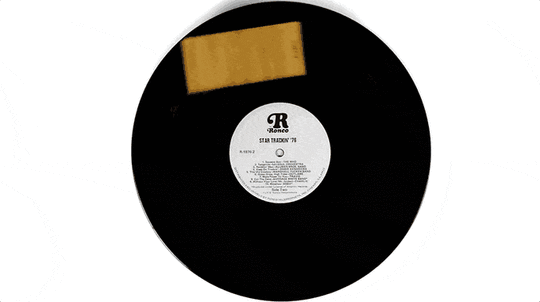
It’s totally portable thanks to its miniature size at just 2 x 4 inches long — meaning you can take it to your Friendsgiving, holiday party afterparty or gift-wrapping session. It’s totally an excuse to convert back to classic vinyl.
Rock out with RokBlok: usually, this innovative player is $99, but you can get it here for $89 — and you can get an extra 20% for Black Friday with coupon code, just for Salon readers: BFRIDAY20.
You should talk about politics this Thanksgiving

(Credit: AP)
After a whirlwind year of division and controversy in American politics, many of us may be anxious about dinner-table dialogue with family and friends this Thanksgiving. There is no denying that the way we communicate about politics has fundamentally changed with the proliferation of technology and social media. Twitter bots, fake news and echo chambers are just a few of the highlights from the political scene. Much of how we’re conversing online can’t – and shouldn’t – be replicated around the family table. We are getting out of practice at conducting meaningful, respectful conversation.
There’s not a quick fix. We need more empathic communication – the slow, deep (inter)personal discourse that can nurture identity and build and strengthen relationships. Yet contemporary communication platforms can make it harder to build empathy with conversational partners. Even the phrase “conversational partners” seems unfitting in the world of 140-character limits, followers, likes and shares. In many ways, our devices help us talk at (@?) instead of with one another.
Literally meaning “in-feeling,” empathy is a process of internalizing another person’s perspective. Empathy-building is unselfish; you suspend your own sensibilities and try to fully imagine and embrace those of someone else. You can gain empathy by learning about other cultures from different media, by experiencing what others have gone through personally, or by having deep conversations with others.
My research into cross-cultural communications has taught me that empathy is not only the key to feeling connected – “I understand you” – but also the foundation for changing our narratives about one another – “now I see we are not so different.” That’s an important point to remember after such a difficult political experience. Building empathy requires communication, specifically talking to one another. But, not just any talking will suffice – especially not the type of talking promoted by today’s highly popular communication technologies.
American disconnection
Americans are more digitally connected, yet less interpersonally connected, than ever.
For an increasing number of us, feeling connected – to family or otherwise – is becoming more difficult. A review of empathy research from the past 30 years revealed that college-age Americans were less able to imagine others’ perspectives and feel sympathy for their plight. The trend has been accelerating since 2000. At the same time, the number of Americans who report that there is no one with whom they discuss important matters nearly tripled, to roughly 25 percent of the population, between 1985 and 2005.
Technology may be part of the problem, making it harder for us to build and maintain strong relationships. It may be breeding increasing individualism, self-importance, loneliness, depression. The theories behind this link vary. In “Generation Me,” psychologist Jean Twenge argues that cellphone ownership – once a luxury for the elite – promotes illusions of grandeur. In “The Lonely American,” two psychiatry professors suggest that communication technology encourages us to remain physically isolated by providing remote connectivity. In “Alone Together,” social scientist Sherry Turkle offers that we are drawn to our devices more than to those in our presence. In “The App Generation,” information scholars Howard Gardner and Katie Davis claim that communication apps promote transactional rather than intimate exchanges.
Words matter
Talking is more than just exchanging information. Substantial personal communication can build empathy. Therapist Peggy Penn’s research has explored the power of language to connect family members in this way.
When you talk, or even write, you reflect on your own position. But, more importantly, you also reflect on the position of your audience: What is she currently thinking? How does my story fit into her experience? How might she respond? This is what Penn (referring back to philosopher Mikhail Bhaktin) calls “double-voiced” communication; it’s relational. Moreover, when you talk and write, you are crafting a narrative, even if a short one. Sometimes, you can surprise yourself when the words come out, gaining new insight into the meaning of your life and hers. In this way, talking can deeply change people, building and shaping mutual identities.
Yet, our written interactions through technology are increasingly short, with less sophisticated language or no language at all (think: Instagram). More and more, our thoughts are broadcast to everyone instead of intended for someone special. Back-and-forth exchanges can be difficult to engage in or follow. All of these may be playing into the tendency on social media to consume others’ content but not to directly communicate with friends one on one. The “double-voiced” communication that spurs empathy is short-circuited.
How to achieve empathy
We can improve our communication with each other, both face to face and via technology, if we focus on building empathy in the following ways:
Get personal. Make sure you are communicating in a private or semi-private space with one or a few dedicated others. This environment encourages self-disclosure and intimacy toward relationship-building. That’s different from seeking to impress others or be validated by them, as is often the case with social media postings. Further, in small groups or in one-on-one conversation, it becomes possible to imagine each others’ individual perspective. When your communication is focused on or intended for another person, it can catalyze empathic connection because you have to imagine and capture the other person in your text.
Write it down. Talking is great, but writing encourages more deliberate wording. Consider writing your thoughts out before you bring them up in conversation at the table. Or, if your face-to-face conversation did not go so well, consider writing a letter after the fact to better communicate your intentions. Personal writing is a form of self-reflection and narrative crafting. Simply writing your thoughts out can change them. This is why therapists sometimes recommend journaling or writing letters to your conversational partner as an intervention that encourages both partners to realign their perspectives.
Take your time. Whether you are engaged in a face-to-face dialogue or communicating through Skype or email, investing time into the conversation is important. The more time you spend in conversation, the more time you spend getting to know each other and the more able you are to share complex thoughts, relatable stories, or convincing arguments. From a linguistic perspective, without back-and-forth dialogue there is simply no opportunity to negotiate meaning and come to mutual understanding. For relationship therapists, without ongoing discourse, there is no way to try out new narratives, change your mind and theirs, and reconnect empathically.
When we have an opportunity to spend time with people who matter to us, we should embrace it, seeking to understand them and to present ourselves openly, to be understood as well. When we are apart, technology can be used to connect us. But, the types of technology we use and the ways we choose to use them really matter. When you’re at the dinner table this Thanksgiving, and especially when you go back home, keep empathy and the perspectives of others in mind.
 Editor’s note: This is an updated version of an article originally published Nov. 23, 2016.
Editor’s note: This is an updated version of an article originally published Nov. 23, 2016.
Stacy Branham, Lecturer of Information Systems, University of Maryland, Baltimore County
Sean Hannity’s long-standing defense of sexual abusers
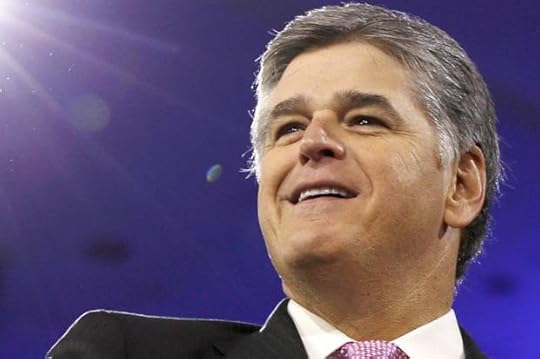
Sean Hannity (Credit: AP/Carolyn Kaster)
Fox News host Sean Hannity has become a reliable ally for powerful men accused of sexual assault and harassment, regularly using his platform to discredit women who report sexual misconduct and cast doubt on their complaints. Here is a look back on the ways Hannity has attempted to undermine these women and defend the men who have been reported.
Roy Moore
Eight women have said Alabama Republican Senate candidate Roy Moore, a former judge of Alabama Supreme Court, sexually harassed or assaulted them, or had relations with them, when they were teenagers. The Washington Post first reported on November 9 that Leigh Corfman was 14 years old when Moore made sexual advancements toward her, and a number of women have since come forward with similar claims.
Hannity: Many women who report sexual harassment “will lie to make money.” [Media Matters, 11/9/17]
Hannity: “Then you have false allegations that are made, and — how do you determine? It’s ‘He said, she [said].’” [Media Matters, 11/9/17]
Hannity: “How do you know if it’s true? How do we — what’s true? What’s not true? How do you ascertain the truth?” [Media Matters, 11/9/17]
Hannity: “We do have Ten Commandments. One of the commandments is ‘Thou shalt not bear false witness.’ We know human beings break, with regularity, the other nine commandments. Did they break this one?” [Media Matters, 11/9/17]
Hannity: “But then also, are there false allegations? And when it’s ‘he said, she said’ or whatever, how do you tell the difference?” [Premiere Radio Networks, Media Matters, 11/9/17]
Hannity invoked the Duke Lacrosse team case; Michael Brown, who was shot by a white cop in Ferguson, MO; George Zimmerman, who fatally shot Trayvon Martin; and Freddie Gray, who was killed in police custody to suggest there’s a history of accusers lying. [Media Matters, 11/9/17]
Hannity: The “swamp,” “the sewer,” and the “establishment” are out to get Moore. [Media Matters,11/9/17]
Hannity: The Wash. Post “hates anything Republican, anything conservative.” [Media Matters, 11/9/17]
Roger Ailes
In July 2016, former Fox News host Gretchen Carlson filed a lawsuit against Roger Ailes, the now-deceased former Fox News CEO, alleging sexual harassment and retaliation against her when she would not have “a sexual relationship with him.” An additional 25 women also came forward with similar accusations. Reports later detailed startling revelations of Ailes’ attempts to cover up his sexual misconduct by spying on employees and silencing his accusers.
Hannity to Carlson: “Why did you stay after such ‘harassment’ asking for more airtime?” [Twitter, 7/13/16]
Hannity about Carlson: “Why did [Carlson] send handwritten notes with smiley faces asking for more airtime after the ‘alleged’ traumatic incident?” [Twitter, 7/13/16]
Hannity attacked accusations levied by Carlson as coming from a “publicity seeking” attorney. [Twitter, 7/9/16]
Hannity: “Hundreds of woman (sic) at Fox that I talked to” said all allegations against Ailes are “BS.”[Twitter, 7/9/16]
Hannity: “I have spoken to many woman (sic) who work at Fox that have the most amazing stories of how kind Roger is to them.” [Twitter, 7/9/16]
Hannity to Gabriel Sherman who reported on Ailes: “U r an Ailes and Fox stalker.” [Twitter, 7/13/16]
Donald Trump
In 2016, at least 20 women accused then-candidate Donald Trump of sexual misconduct, including 12 nonconsensual physical encounters. In October 2016, The Washington Post reported on a video clip in which a hot microphone caught Trump bragging to Billy Bush, then of Access Hollywood, “in vulgar terms about kissing, groping and trying to have sex with women.”
Hannity shrugged off accusations against Trump, arguing, “King David had 500 concubines for crying out loud!” [Fox News, Hannity, 10/7/16]
Hannity suggested that one of Trump’s accusers may have “welcome[d]” the sexual assault. [Media Matters, 10/13/16]
Hannity mocked one of Trump’s accusers: “Donald Trump groped me on a plane. It was all right for the first 15 minutes, but then he went too far.” [Media Matters, 10/14/17]
Hannity on Trump accusers: “Just saying ‘help’ would solve the problem.” [Media Matters, 10/20/17]
Hannity called accusations of sexual assault against Trump “an attempt to neutralize the WikiLeaks revelations,” referring to the stories generated from hacked Democratic emails. [Media Matters, 10/13/16]
Bill O’Reilly
On April 1, The New York Times reported that former Fox News host Bill O’Reilly and 21st Century Fox, Fox News’ parent company, paid out at least $13 million in settlements with five women who said O’Reilly harassed them.
Hannity gave O’Reilly a platform on his shows multiple times to attack the women who reported him. [Media Matters, 9/26/17, 10/5/17]
Hannity hosted disgraced former Fox host O’Reilly after he was fired from the network. [Media Matters, 9/25/17]
Clarence Thomas
In 1991, Anita Hill, who worked as a former aide to Supreme Court Justice Clarence Thomas during his time at the Department of Education and the Equal Employment Opportunity Commission, “submitted a confidential statement to the Senate Judiciary Committee alleging that Thomas had sexually harassed her 10 years earlier,” according to CBS News. At least two other women also accused Thomas of sexual assault.
While interviewing Thomas, Hannity referred to his accusers as “those that systematically went about destroying you.” [FoxNews.com, 10/3/07]
Hannity implied that Thomas was “an innocent man” who had had “his reputation destroyed forever.” [Premiere Radio Networks, The Sean Hannity Show, 11/10/17]
Hannity has praised Thomas for “giving one of the most powerful defenses” against sexual assault accusations. [Fox News, Hannity, 11/10/17]
Herman Cain
In 2011, at least two women reported that Herman Cain, who was at the time a candidate in the Republican presidential primaries, had sexually harased them during his tenure as the head of the National Restaurant Association in the 1990s.
Under a screen graphic that read “Herman hysteria,” Hannity questioned whether the charges were “politically motivated,” and badgered an accuser for “staying in the car” with Cain after she says she was harassed. [Media Matters, 11/11/11]
Hannity sought to discredit accusations against Cain and Justice Clarence Thomas, parroting their characterization of the charges as a “high-tech lynching.” [Politico, 11/10/11]
Hannity on Cain’s press conference denying sexual harassment accusations: “You would think this is going to end it.” [Media Matters 11/9/11]
Bill Shine
After Ailes was ousted in August 2016 amid mounting sexual harassment allegations, Fox News promoted Bill Shine to co-president of the network. As senior executive vice president, Shine had reportedly “played an integral role” in covering up sexual harassment claims, including those against Ailes. Shine had a role in pushing “women into confidential mediation [and into] signing nondisclosure agreements in exchange for their contracts to be paid” as well as in establishing a “counter-narrative” to discredit Carlson. He later resigned after reports surfaced that he was cited “in at least four lawsuits” that accused him of ignoring, dismissing, and even concealing sexual harassment allegations against Ailes.
Hannity: “Somebody HIGH UP AND INSIDE FNC is trying to get an innocent person fired.” [Twitter, 4/27/16]
Hannity: If Shine is fired, “that’s the total end of the FNC as we know it.” [Twitter, 4/27/16]
Hannity: “#Istandwithshine.” [Twitter, 4/27/16]
How to survive Thanksgiving if you have to spend it with die-hard Trump supporters

(Credit: Getty/Rawpixel Ltd)
For some of us, the approaching holidays are a time of dread. Beyond beloved traditions like overindulging on food, alcohol and shopping, for some people, it’s inevitably a time when they will clash with loved ones over politics. Plenty of Americans have family members with opposing political views, and Trump has made these divisions even more severe. If progressives are having trouble understanding the conservatives in our own families, how can we begin to empathize with Trumpers who don’t share our blood?
The sharp division in beliefs among Americans today has prompted some to search for solutions. Meet Narrative 4, which was launched five years ago with the goal of spreading the practice of “radical empathy” across the world using the act of storytelling. As the group’s founder, author of Let The Great World Spin Colum McCann, says, “every story has a place, even the stories we don’t like.” McCann proposes radical empathy as a way to actually make people listen to one another.
Those who live near or on college campuses may recognize the term, as radical empathy has taken off in universities in recent years. It entails literally placing oneself in another’s shoes by living in a person’s house, shadowing them or otherwise initiating close contact. Radical empathy means knocking down the walls that exist between yourself and another person to better understand them.
Narrative 4 brings radical empathy practice to schools, universities and workplaces in the form of workshops where participants follow a simple story exchange. Partners A and B share a story with one another; then, Partner A tells Partner B’s story to a group using the first person, as if B’s experiences actually happened to A. Then the two switch. Participants in Narrative 4’s radical empathy story exchanges say they often feel changed after the experience. “It’s changed my life for the better,” said Narrative 4 student ambassador Alondra Marmolejos. “It’s such a positive and beautiful thing.”
In these divisive political times, empathy is a more important skill than ever. Lee Keylock, Narrative 4’s director of global programs, agrees that using empathy to understand different political views is hugely important: “It’s one of our biggest priorities this year — it’s why our phones are ringing off the hook.”
While the group focuses on the exchange of stories individual-to-individual, their work frequently resonates with the larger project of spreading political empathy across parties. Perhaps their most well-known project is a collaboration with New Yorker Magazine last year, when Narrative 4 brought together a group of individuals with drastically opposing views on one of the most divisive issues in the U.S. today: gun control. Participants in the gun control radical empathy session included a prominent Second Amendment advocate, members of the police and Marines, a parent of Sandy Hook victims, and Samaria Rice, mother of Tamir Rice.
“People crave discourse,” said Keylock. “Debate isn’t the only way to go.”
Much of Narrative 4’s radical empathy practice focuses on students and young people. “It’s easier to get them when they’re young because they come with this fresh, open-minded attitude,” said Keylock. “They find they’re very similar to each other. Wheres as adults have had more time to become cynical. They think they need to be guarded.”
But older progressives can bring the practice into their own lives, too. “When I look at the news right now, there’s lots of shouting and name-calling and vilifying on both sides, and that includes the Democrats,” said Keylock. “When you start labeling people as an ideology, you’re not really seeing them as a person. Let’s face it, not every conservative voice is what they’ve been charged within the media, which is homophobic, racists, Islamophobic. That’s just not the case. There are narratives out there that are being missed, so you need to have an open mind.”
Since the 2016 election, a popular explanation for the surprising wave of Trump votes is that Trump tapped into fears and concerns of the white working class that Democrats have long ignored. Whether you give credit to that storyline or not, it seems true that Trump supporters felt their stories weren’t being heard or represented by the mainstream media, and in Trump, they saw a voice they believed would speak for them, misguided as that belief may seem. Keylock agrees with this analysis. “In my experience, one of the hardest voices to bring to the table is the conservative voice. Conservatives are a little scared to speak out because they feel like they get shafted.”
He continues: “What happened is that because of all the labeling, people like to dig their heels in the sand. If you ask a political question, people have their argument ready to roll. We don’t do that; we get people to share their personal stories, and we get them to sort of become lovestruck with each other. It’s amazing what happens. We get to some really deep places. We’ve started friendships among these political divides.”
He said hundreds of Narrative 4 story-exchange participants with opposing political views later become Facebook friends and now frequently defend one another’s political posts. It’s incredible to imagine people with different beliefs behaving civilly on the internet, where the cloud of anonymity turns humans into trolls. But Keylock says he’s seen it happen many times.
Narrative 4 does not claim to have a 100 percent success rate when it comes to healing divides. Sometimes, two people can be so different in terms of their life experiences it’s simply impossible for them to empathize with one another. “Usually on the issue of guns,” Keylock said. “It’s very contentious. Sometimes it’s not the right time to bring people into a room together to do it—if you’ve lost a kid to gun violence, it’s hard for that person to even entertain the idea. On those issues, you need to give it more time. The more times you bring people together, the more success you have.”
But, Keylock continued, “Honestly, I’ve very rarely seen the impossible. Political divides can be turned around really quick.”
Keylock also shared advice for those of us with Trump supporters in our families as the holidays approach. “Empathy takes a massive amount of courage, even though it’s considered a soft skill. We have to be vulnerable, be ready to let go. You have to listen to what somebody is saying. That doesn’t mean accept it blindly, but you learn nothing from talking and everything from listening. All people’s stories matter.
“Go in, open your ears, watch your tone. Then tell them your story. A lot of these conversations are bred from fear and ignorance. That turns into hate later. But empathy is about being vulnerable and courageous, and listening and being present. Those are leadership skills. If you can’t do that, how can you lead your conversation forward?”
Also: “Breathe, meditate.”
How “Planes, Trains and Automobiles” redefined Thanksgiving
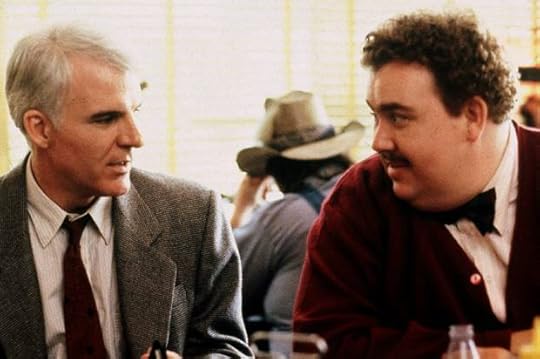
Steve Martin and John Candy in “Planes, Trains & Automobiles” (Credit: Paramount Pictures)
“Planes, Trains and Automobiles” is the best Thanksgiving movie of all time. That’s a thigh bone rather than full bird of a statement, as the film, which turns 30 on Saturday, has been making “Best Thanksgiving Movies” lists pretty much its entire life. But in looking at its listmates and what we usually mean when a movie becomes part of an annual holiday celebration, “Planes” isn’t sitting at the same table — it’s rebuilding it in the garage. Instead of playing the holiday’s rituals for drama or laughs or riffing on the spirit we think the occasion embodies, “Planes” tells a deceptively simple story that re-imagines the meaning of the holiday that surrounds it. “Planes, Trains and Automobiles” does for Thanksgiving movies what “Trading Places” and later, “Die Hard,” would for Christmas movies, if “Trading Places” and “Die Hard” resulted in late December becoming the time of year to corner the market on frozen orange juice futures or rescue hostages from a seized office tower.
“Planes, Trains and Automobiles” departs with a story choice so obvious that it feels like a master class — two great comedians with great chemistry in a situation that plays to their inherent gifts — instead of a revelation. It stars Steve Martin and John Candy playing themselves trying to get home from New York City to Thanksgiving dinner in Chicago. Everything that can go wrong does. Neal Page (Martin) is an uptight advertising executive whose relentless business travel has become a way for him to interact mainly with strangers rather than live with any real intimacy. (“Spending time with him is like being alone,” said Tom Smothers, an early comedic mentor of Martin in real life.) Del Griffith (Candy) is a salesmen who does the same, in part to turn strangers into friends, but as a way of running from a longstanding hurt at home. (“All he wanted to do was make people laugh, but sometimes he tried too hard, and he hated himself for doing that,” wrote Roger Ebert of the real-life Candy.)
The two meet on Fifth Avenue, trying to get to the airport when Del steals Neal’s cab by accident. They end up stuck together on a two-day odyssey of bad luck, learning from one another thanks to blizzards, faulty commuter rails, rental car mishaps and pretty much any travel misfortune and indignity you can imagine, circa the early winter of 1987. All praise due to the screenplay by John Hughes (who also directed) that “Planes” still largely holds up in present travel conditions of finding a last minute Airbnb when stranded or Uber-ing your way out of delays. When six feet of snow drops in as many hours, stuck feels like stuck no matter where or when you are.
The condition of being stuck far from the comforts of home is a perfect catalyst for the styles of both comedians. Martin is all loose-limbed exasperation as bad luck keeps shoving him into soggy beds and scalding motel showers he can’t buy his way out of. Candy’s oversized frame and mismatched multi-layered outfits betrays a man at home with the anonymity of airport gates and train depots but uneasy sitting still with real conversation. Like his sweaters, his jokes are loud and overly-friendly. Initially it makes “Planes” an effortless comedy with its most quotable moments — Martin giving a perky rental car agent (Edie McClurg) a monologue of f-bombs, Candy offering to make up for stealing Martin’s car via a list of airport sundries — coming from its two stars slam dunking what they already do best.
Hughes’s plainspoken, naturalistic dialogue helps without prodding them along. “Planes” feels different than his two biggest movies up to this point — “The Breakfast Club” and “Ferris Bueller’s Day Off” — which seem written to produce at least one quotable zinger per scene. All three films are about ordinary people on extraordinary days of their lives and often, extraordinary times of year, favorite themes of the late filmmaker. This was a somewhat personal film — Hughes wrote “Planes” to celebrate his young family moving back to his beloved Chicagoland area after four years in Los Angeles. He had two of the greatest living humorists as his leads. Call it artistic maturation (“Planes” was the first film he directed about adults and family rather than teenagers) or simple good luck, but “Planes, Trains and Automobiles” is so front-loaded with fortunate circumstances — two superstar comedians playing themselves trying to get home to the city that the director called both inspiration and home on the week all of America wants to go home to places they love — that Hughes could have steered right into what he had and called it day.
And we would have a nice Thanksgiving movie, maybe even a listmate of the “Planes” we ended up with, but not the best living example of the genre. Because wrapped around this perfectly workable Thanksgiving road trip comedy is its adversary: a setting cold and vast instead of cozy and intimate, centered on the personal drama of strangers instead of family members with each other, a road trip story with Thanksgiving dinner as the destination that never quite gets there. (I’m spoiling nothing by saying that the Thanksgiving dinner Martin and Candy ultimately come home to happens off screen after the movie is over).
If the road trip is among our most American movie format genres, “Planes, Trains and Automobiles” allows itself almost none of its gifts: the road here doesn’t lead to freedom but vulnerability, Del and Neal don’t chose the journey but it instead holds them captive. If Thanksgiving is among not only our most American holidays but also our most deliberate — the whole country travels to a designated place for a traditional meal at a designated time — “Planes, Trains and Automobiles” is rather a story about chance, about a friendship born when two people hiding inside their skin are brought out of it by being stranded with one another.
We see these two movies becoming one in its best known scene. Martin yells at Candy for being a slobby motormouth with the social skills of a talking Chatty Cathy Doll, then mimics pulling a string on his chest. It’s vintage Steve Martin, hilarious except Hughes keeps his camera on Candy whose face goes from indignant to wounded to painfully real in seconds. And when he speaks to defend himself — “You’re right. I talk too much. I also listen too much. I could be a cold-hearted cynic like you. But I don’t like to hurt people’s feelings” — Hughes reverse shots to Martin’s face in closeup, eyes closed, head tilted down in humiliation. He’s been a jerk to the one person who actually cares about him getting home as much as he does and is in a position to actually do something about it.
If Thanksgiving is a celebration of family, bounty and gratitude for what we have, its shadow is a painful recognition of what we don’t and how we have been complicit in keeping it away. In “Planes, Trains and Automobiles,” the holiday of gratitude doesn’t make Neal and Del thankful but humble and self-aware. Family in this movie is just not the finish line but a reminder of how the two men have fallen short and contributed to their own unhappiness. It’s happy ending comes only after a terribly sad moment when Neal realizes what Del has actually been coming home to, Del admits why he wasn’t truthful with Neal about it and Neal realized that this honesty and vulnerability is exactly what his own life lacks. Their joint homecoming is discovering what they’ve been missing is what the other is at his core.
What makes for a great holiday movies? Does it embody its rituals (“National Lampoon’s Christmas Vacation“), its spirit (“It’s a Wonderful Life,” which was released in January of 1947 and became a yuletide classic a full 30 years after that) or strike the holiday against its theme like a tuning fork? (If there’s a greatest ever Labor Day weekend movie, “Stand By Me,” about the hard realities of growing up and losing childhood friends, is it.) In the case of “Planes, Trains and Automobiles,” it’s taking what Thanksgiving and therefore movies about it are — cinema, as a populist art, is rarely in a position to present a holiday as anything other than our conventional readings of it, which is why movies set on New Year’s Eve will never lack champagne and countdowns and the characters saying “next year will be different” — and using it as a counter to tough, firm questions. What if warmth, home and togetherness are a reminder of the very things we have kept from ourselves?
Even though the majority of beloved Thanksgiving movies concern themselves with meal prep before (“Pieces of April”), family drama during (“Home for the Holidays,” “House of Yes”) or dealing with old hurts after (“The Big Chill,” “Hannah and Her Sisters”), and even if a road trip with turkey dinner as destination instead of centerpiece isn’t unique to “Planes” (“Scent of a Women” would go there in 1992) or even its director (the Hughes-scripted “Dutch” in 1991), all Thanksgiving movies are, in the end, about coming home. It’s the least varied of the holiday genre categories, if we recognize that films now considered “Christmas Movies” can just happen to take place around Dec. 25 (“Die Hard“), Fourth of July movies are always about freedom and America, but that encompasses a whole lot (Imagine “Mr Smith Goes to Washington” and “Independence Day” on the same best-of list, because it happens all the time) and Garry Marshall’s late-in-life holiday trilogy (“Valentine’s Day,” “Mother’s Day” and “New Year’s Eve”) were a release-date gimmick more than anything else.
“Planes, Trains and Automobiles” is the modest, brilliant exception that proves the rule: In the story of Neil Page and Del Griffith, on its face a very funny, silly comedy about the mishaps of trying to get home to Thanksgiving dinner during a blizzard, we actually get a story that reframes the ritual of Thanksgiving itself as a homecoming, not to one’s family but one’s self, to the idea that in order to be thankful for what we have, we have to first be open to letting people be thankful for what they see in us.




